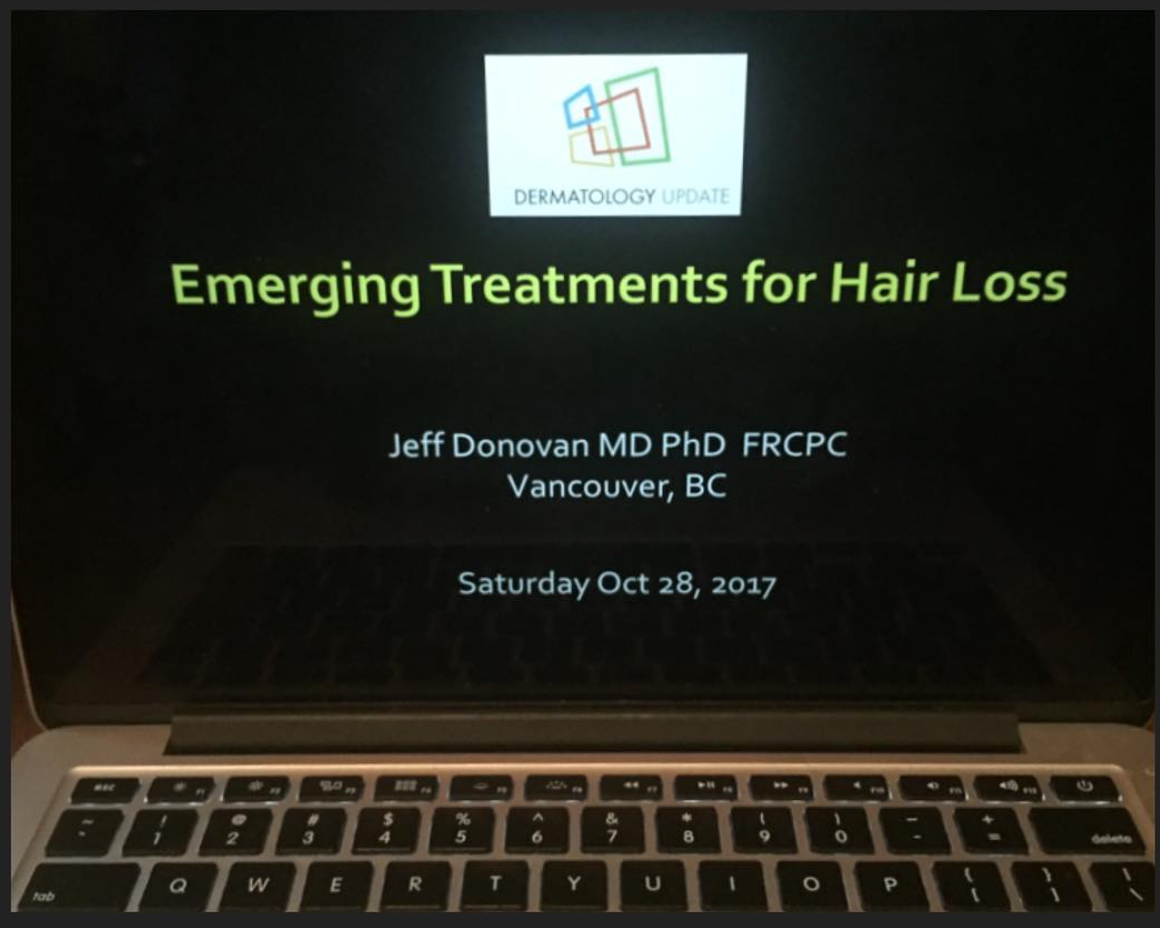Emerging Hair Loss Therapies.
What's new in hair loss research?
I'm honoured to speak this weekend at the 2017 "Dermatology Update" conference in Vancouver. I'll be speaking about "Emerging Therapies for Hair Loss." In the last 5 years we have witnessed a remarkable increase in new options for treating various types of hair loss - and I'll have an opportunity to summarize these for the attendees.
Concerns about long-term side effects of some medications and a demand for more effective therapies are driving the development of new treatments for androgenetic alopecia. Topical anti-androgens (particularly topical finasteride) are increasingly used for treating male patterned hair loss. Topical bimatoprost (ie higher concentrations of Latisse) is actively being studied. Drugs which inhibit PGD2 (Setipiprant) are being studied and are among the exciting therapies to watch for. Low dose oral minoxidil (0.25 mg to 1 mg) is increasingly being considered as an option. Platelet rich plasma therapy has evidence now to support a therapuetic benefit in some patients.
One of the biggest breakthroughs in the last 5 years has been the recognition that inhibition of the Janus kinase (JAK) pathway can facilitate hair growth in many patients with alopecia areata. Both ruxolitinib and tofacitinib, in both topical and oral formulations, have shown benefit in treating alopecia areata and I will review these studies at the conference.
Cold caps have been popular in Europe for well over a decade but were banned in the US in 1990 on account of a lack of data on safety and efficacy. The recent FDA clearance of the Dignicap in 2015 and the Paxman cooling system this year offer new options for preventing hair loss from chemotherapy.
This article was written by Dr. Jeff Donovan, a Canadian and US board certified dermatologist specializing exclusively in hair loss.

